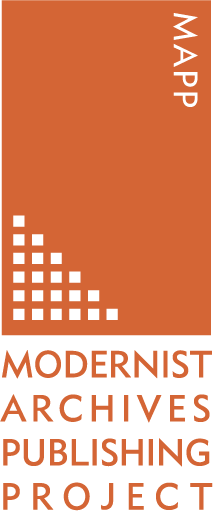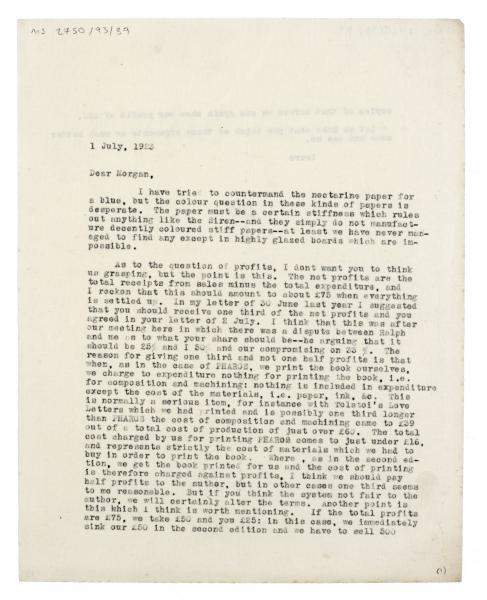[[1]]
[[MS 2750/93/39]]
1 July. 1923
Dear Morgan,
I have tried to countermand the nectarine paper for a blue, but the colour question in these kinds of papers is desperate. The paper must be a certain stiffness which rules out anything like the Siren- -and they simply do not manufacture decently coloured stiff papers- -at least we have never managed to find any except in highly glazed boards which are impossible.
As to the question of profits, I dont want you to think us grasping, but the point is this. The net profits are the total receipts from sales minus the total expenditure, and I reckon that this should amount to about £75 when everything is settled up. In my letter of 30 June last year I suggested that you should receive one third of the net profits and you agreed in your letter of 2 July. I think that this was after our meeting here in which there was a dispute between Ralph and me as to what your share should be- -he arguing that it should be 25% and I 50% and our compromising on 33%. The reason for giving one third and not one half profits is that when, as in the case of PHAROS, we print the book ourselves, we charge to expenditure nothing for printing the book, i.e. for composition and machining: nothing is included in expenditure except the cost of materials, i.e. paper, ink, &c. This is normally a serious item , for instance with Tolstoi's Love Letters which we had printed and is possibly one third longer than PHAROS the cost of composition and machining came to £39 out of a total cost of production of just over £60.The total cost charged by us for printing PHAROS comes to just under £16, and represents strictly the cost of materials which we had to buy in order to print the book. Where , as in the second edition, we get the book printed for us and the cost of printing is therefore charged against profits, I think we should pay half profits to the author, but in other cases one third to me seems reasonable. But if you think the system not fair to the author, we will certainly alter the terms. Another point is this which I think is worth mentioning. If the total profits are £75, we take £50 and you £25: in this case, we immediately sink our £50 in the second edition and we have to sell 500
[[2]]
copies of that before we can again show our profit of £50.
Let me know what you think of these arguments or much better come and see us.
Yours | LW [signature]


